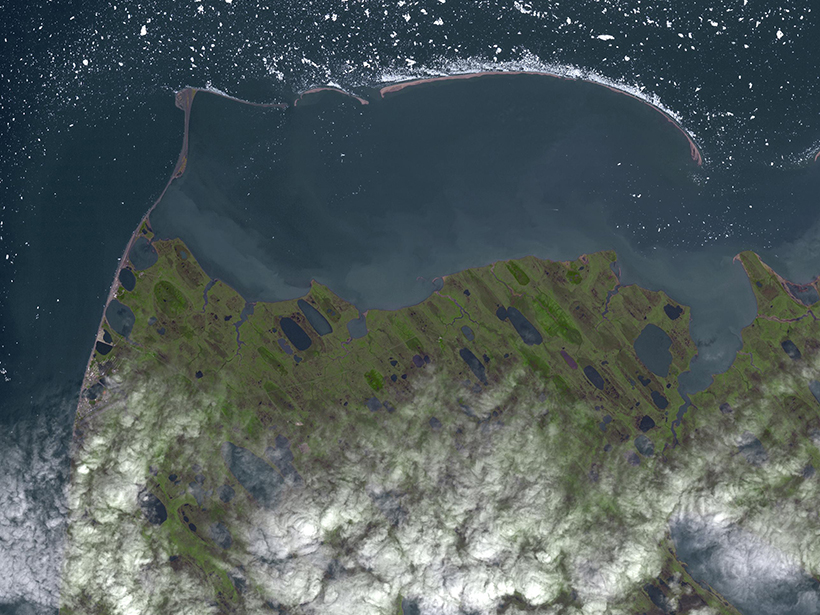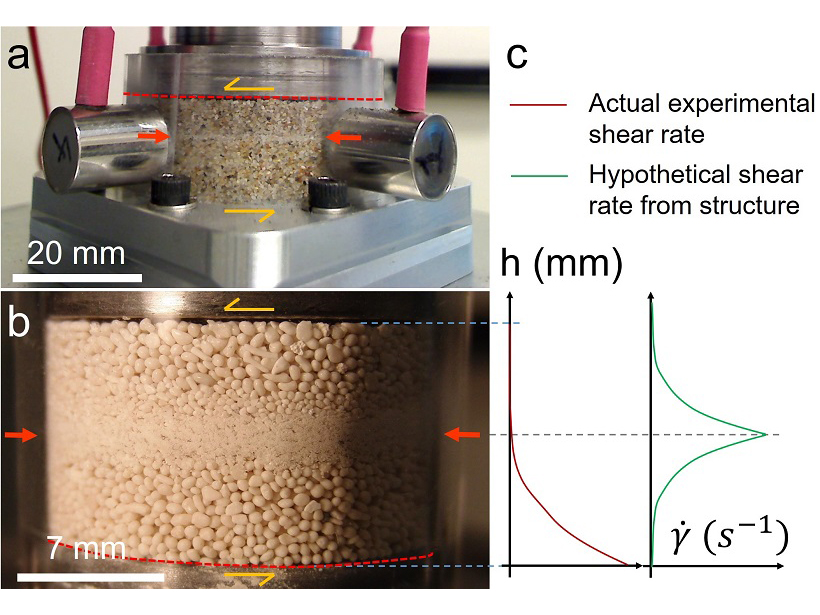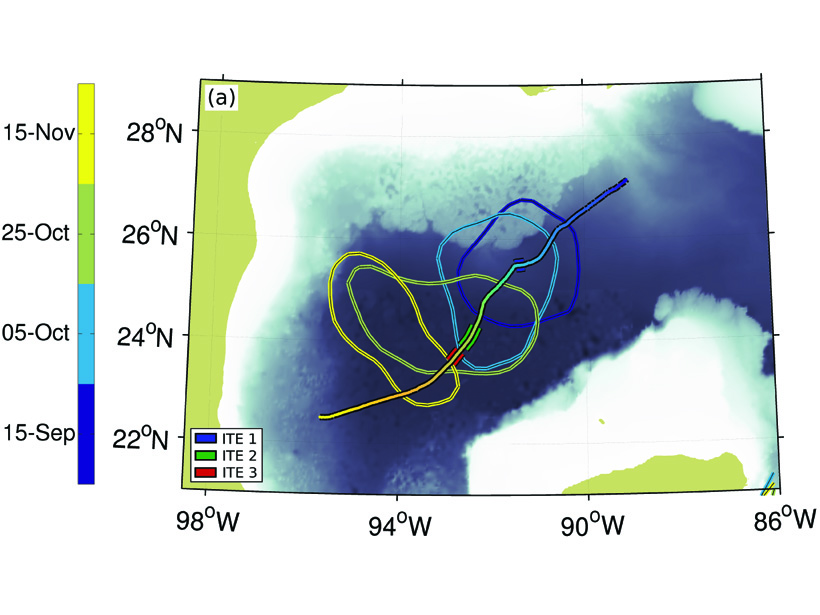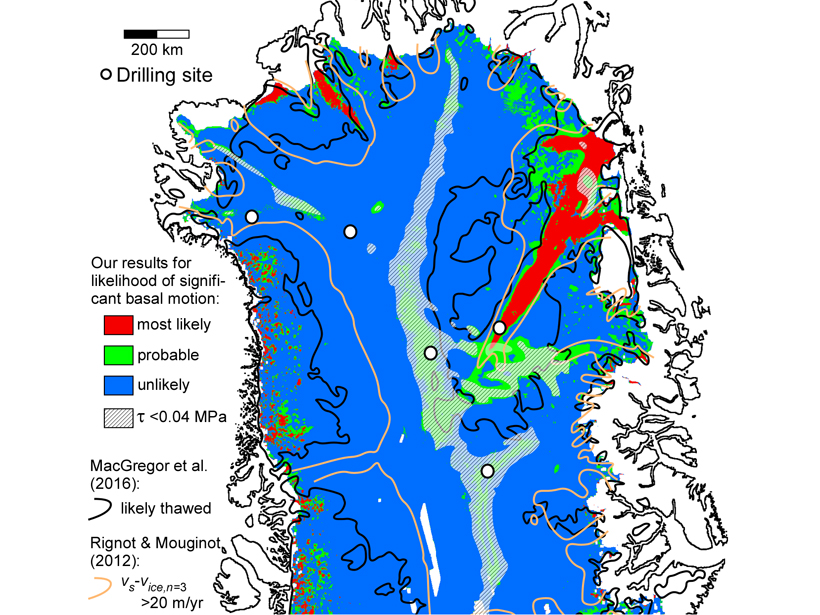An analysis of Point Barrow’s 40-year record points to the importance of calculating the carbon cycle’s response to temperature during the northern latitudes’ non-growing season.
Geophysical Research Letters
A New Spin on Grain Segregation in Fault Zones
Fine-grained layers in sheared fault gouge may be formed by shear-driven size-segregation in granular materials, rather than by shear localization.
Insensitivity of Total Sediment Flux to Hydraulic Details
The total sediment mass transported by flow under different sets of regimes is insensitive to the exact details of hydraulic forcing, but what matters is cumulative transport capacity.
Smaller Eddies Found Within Eddies
A glider survey observed three small eddies embedded within a larger scale eddy associated with the Loop Current in the Gulf of Mexico.
New Modeling Framework Improves Radiative Feedback Estimates
A new approach offers insights into the relationship between surface temperature and top-of-atmosphere energy imbalances and improves the understanding of important climate feedbacks.
Carbonate Melting Enhances Mantle CO2 Fluxes in Old Ocean Basins
The amount of CO2 segregated from the mantle by carbonate melting beneath old oceanic crust may equal that emitted along the mid-ocean ridge system, thereby contributing to the global carbon cycle.
High-Altitude “Wind Walls” Discovered near Magnetic Poles
Satellite imaging reveals two narrow channels of extreme winds surrounded by gentle opposing flow 140–250 kilometers above sea level.
Greenland Basal Melting May Be Considerably Less Than We Think
New observations of surface ice velocity over northern Greenland challenge current assumptions used in ice sheet models to model the deformation mechanisms that govern ice flow.
Scraping Bottom: Iceberg Scours Reveal North Atlantic Currents
A 3-D seismic analysis of Pleistocene iceberg gouges indicates that surface currents in the Norwegian Sea flowed northward and remained consistent during numerous glacial cycles.
How Jupiter’s Icy Moons Got Their Bands and Grooves
Europa’s churning ice crust could reveal signs of ocean life, new study suggests.










